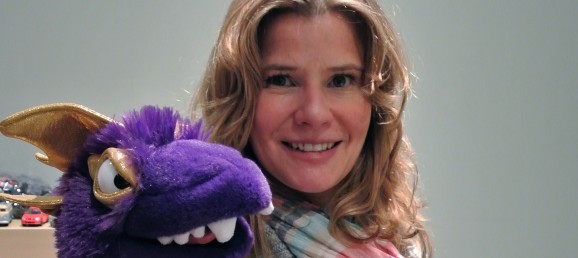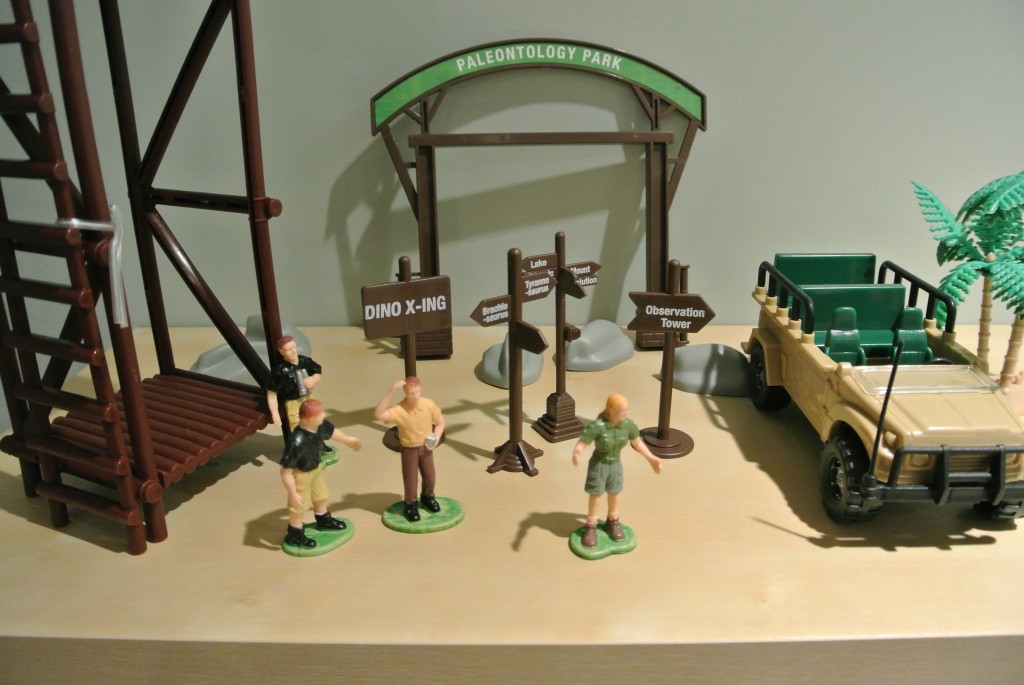My practice has two front doors, literally. The first is the traditional entrance that leads into my office with comfy chairs and, yes, the all-important couch!
The other entrance is probably unlike any private practice you’ve seen or been to before. Upon entering, you walk into a child’s greatest fantasy – it may look to you like a miniature toy store. One wall of the room is lined with shelves of miniature figurines, including dinosaurs, robots, dolls, animals of all types and sizes, warriors and dragons and even mystical figurines, just to name a few. A wooden dollhouse with ethnically and culturally representative dolls sits by the window, ready for its next guest. There are two sand trays – one wet and one dry, (who says you can’t play with sand inside!) and a water tray. There is a dress up chest filled with costumes and puppets hanging around waiting to be brought to life. There are also art supplies including paint, clay, crayons and pastels.
Let me assure you, these toys are not for me! When people ask about my private practice, I tell them that I see clients on an individual, couple and family basis. I also tell them that I am able to see children in my expressive play therapy room, which often results in a quizzical look. The puzzlement on their faces is usually derived from the fact that they don’t really know what a child play therapy room looks like, let alone how child therapy works.And that’s understandable because it is a far cry from the traditional couch therapy we see so often depicted in Hollywood movies and shows.
Expressive child psychotherapy utilizes many forms of expressive play, which serve to process a child’s thoughts, feelings and experiences. Play is a child’s natural way of processing inner and outer world experiences. Through play, children reveal and process how they feel about themselves and the world they live in. Just as adults are impacted by their outer worlds so are children. Outer world experiences can impact one’s inner world beliefs and coping strategies, which can serve to transform a person’s way of being in the world positively or negatively.
Children are influenced by their outer worlds through their interactions at school, home, during a play-date, church, at a local community center, on playgrounds etc. In order to work through these experiences, the toys and other mediums available in my play therapy room are essential. As I greet my young clients, I invite them to choose the medium they wish to use (though I clearly don’t use the word medium!). I attune myself to where they are in the present moment, and follow and guide them in their expressive play.
Sometimes a child will choose to play and create solely in the sand, while other days he/she may choose to process their life events using toys or artwork. At times, they may choose to utilize a few different types of expression, all within the same therapeutic session. Anything goes in my play therapy room – yes anything. Of course, I maintain safety through boundaries but, overall, I provide them with a safe place to express their anger, grief, confusion, mistrust, loss, lack of connectedness, aloneness, sadness and trauma without judgment. Thankfully, children seem to feel at home in my playroom.
At the end of our session, we have a gentle closing ritual that I gleaned from an expert in the field, Marie Jose D’haese. To close our session, I always have the child settle down in my comfy corner. I give them a healthy snack (approved ahead of time by mom, dad or their caregiver). I carefully choose a special story and read it aloud, then I light a candle and ask the child make a wish. We blow out the candle together and I say goodbye. The clean up process after they leave can take time, but I cherish that time. As I prepare the expressive play therapy room for my next client, I find myself processing the session and letting it go.
I schedule my clients so that I am able to meet them with an emotionally clean slate. To me, being part of a client’s life and sharing in their process of joy, sorrow, anger or grief, regardless of their age, is a privilege. I am grateful for my work as a therapist, on a daily basis.





No one has posted a comment on this post yet. Start the discussion!